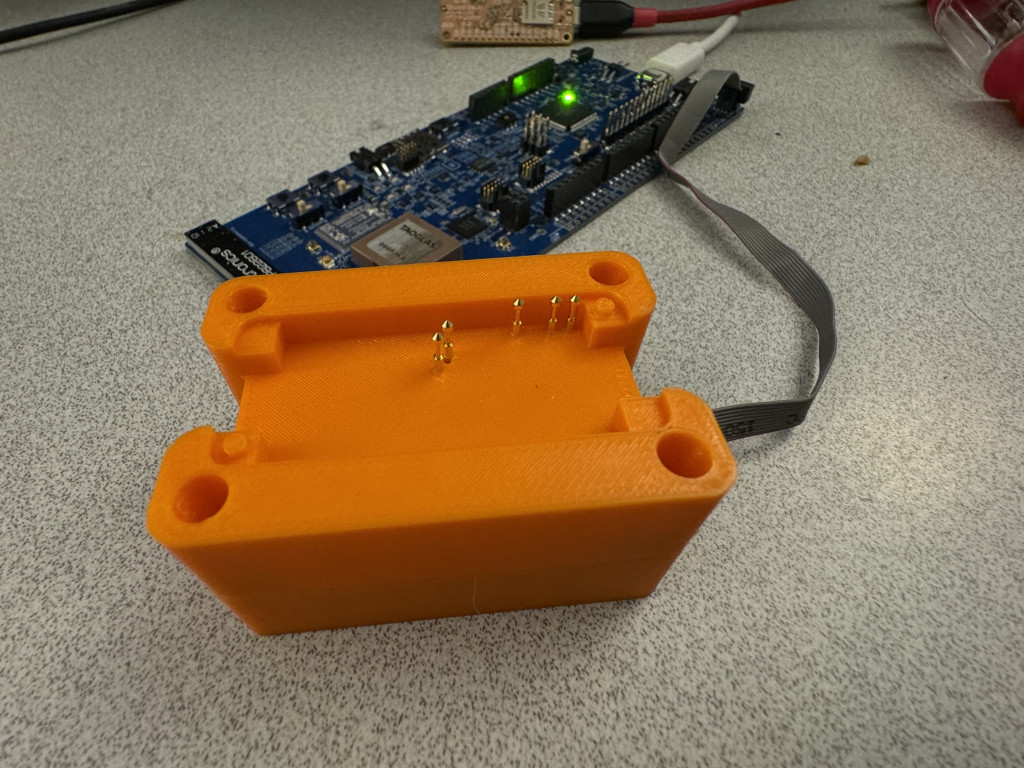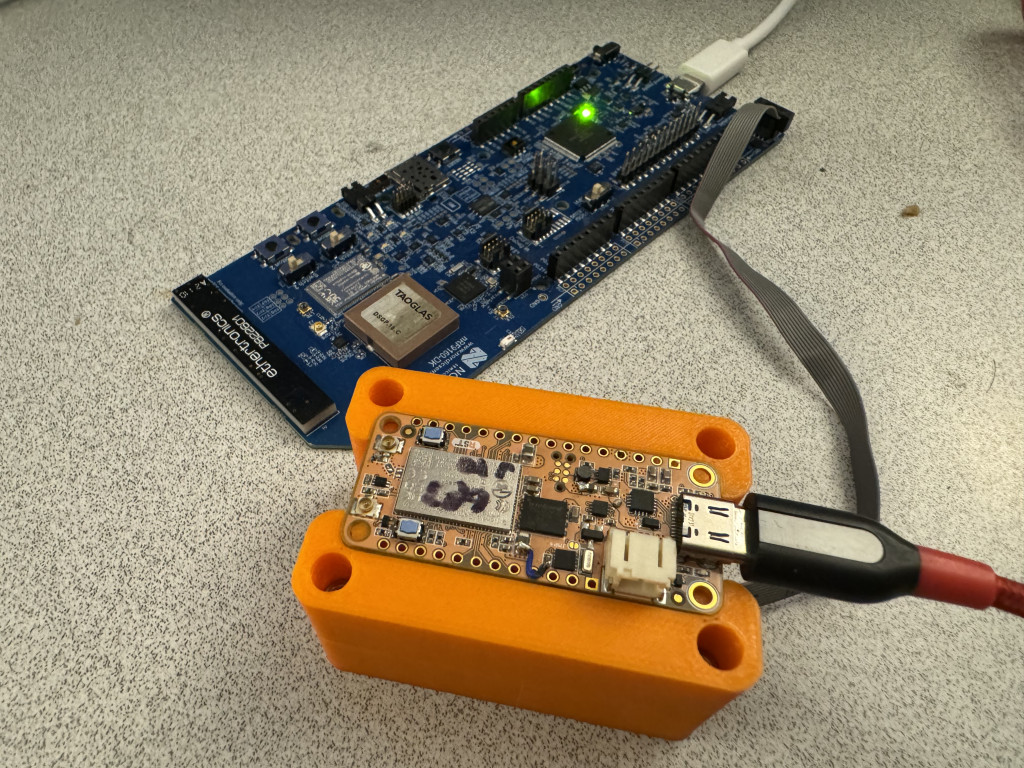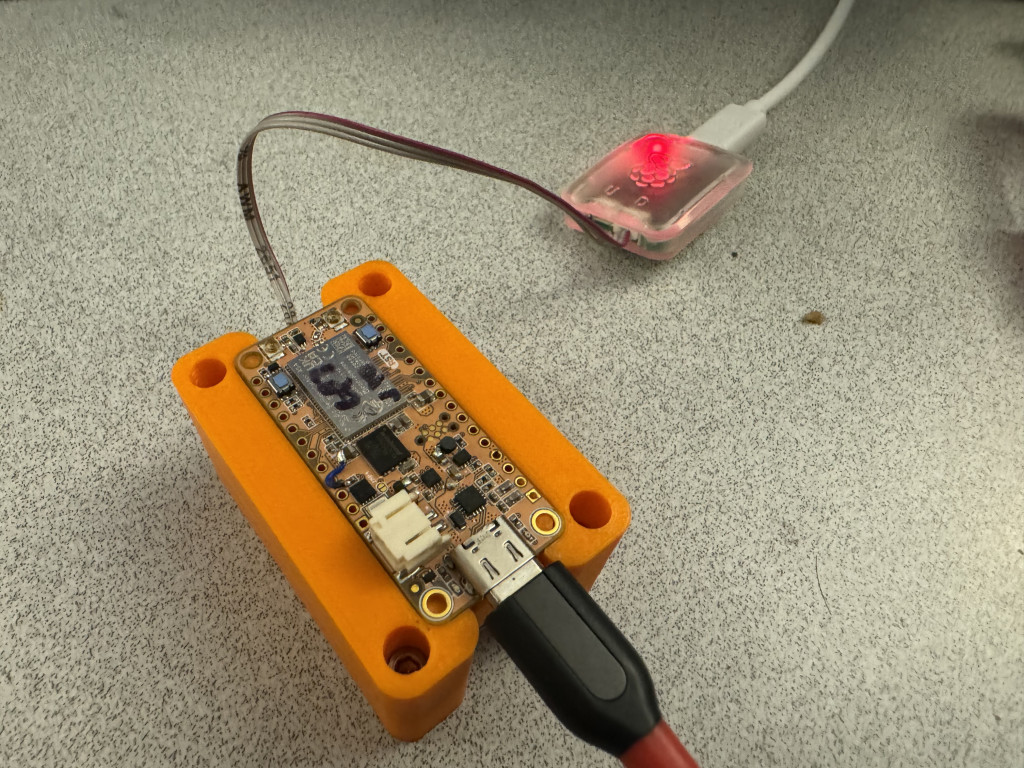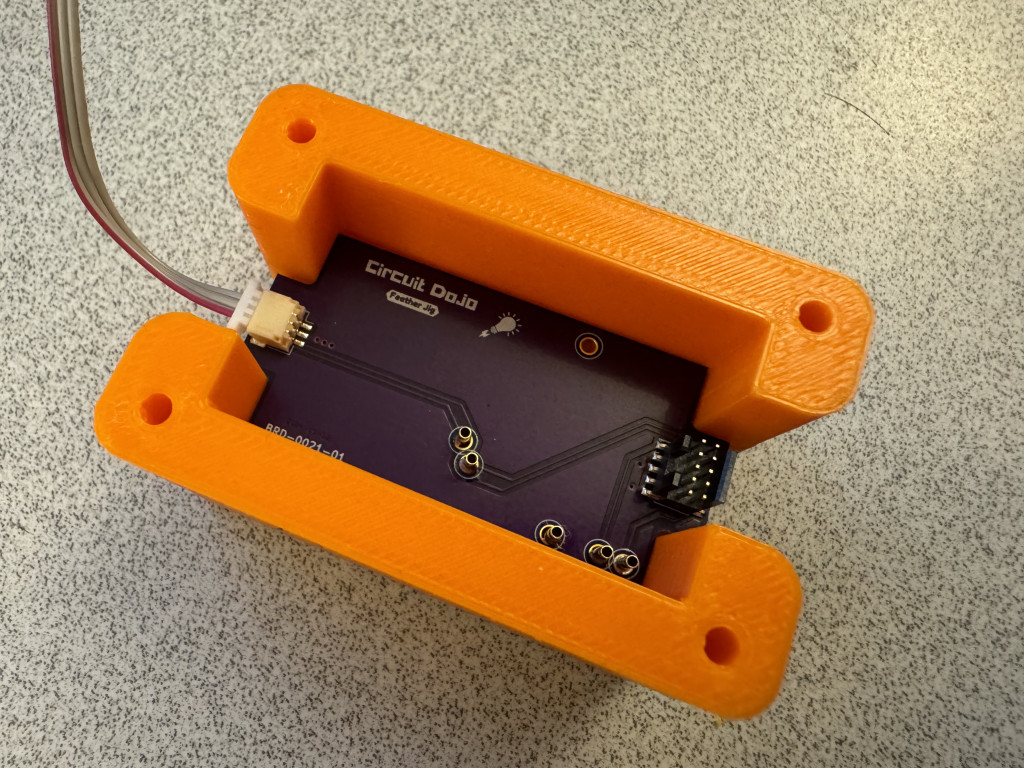Okkk!
Sorry for the lack of updates. I’ve been waiting for boards plus orders have been keeping Circuit Dojo HQ busy.
I digress. I mentioned this guy before but the first rev had some issues. A batch of the second version is built and ready to go.

It works with all Circuit Dojo Feather boards. (nRF91xx, nRF52833 (unreleased), etc) and supports use of the Raspberry Pi Debug Probe and 10-pin Segger JLink interface. I even went the extra step to bring out the reset pin for the 10-pin 😉


Here’s the bottom:

I imagine this would be good for mass programming and also de-borking boards if you do something silly.
The design will be open sourced at the launch of the nRF91×1 Feather. I’ll have more on that shortly. For those folks who are looking for early samples I should have some this week as long as assembly & testing works out OK.